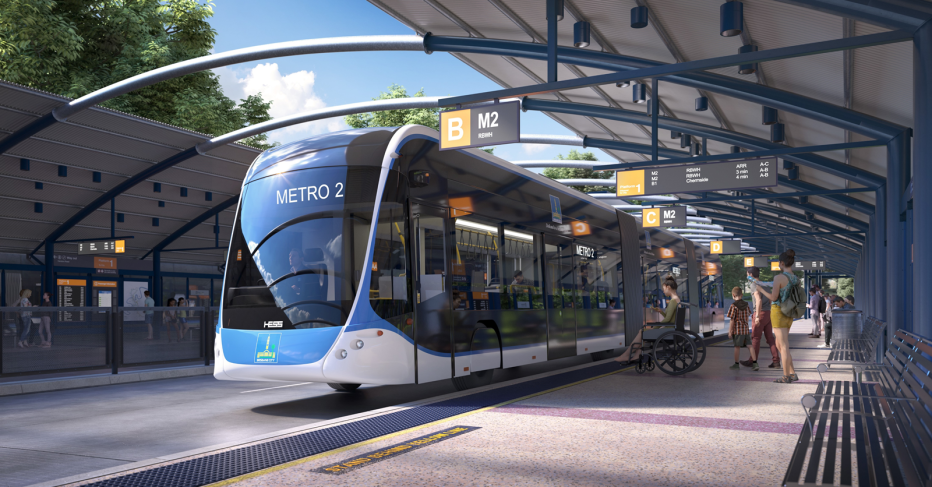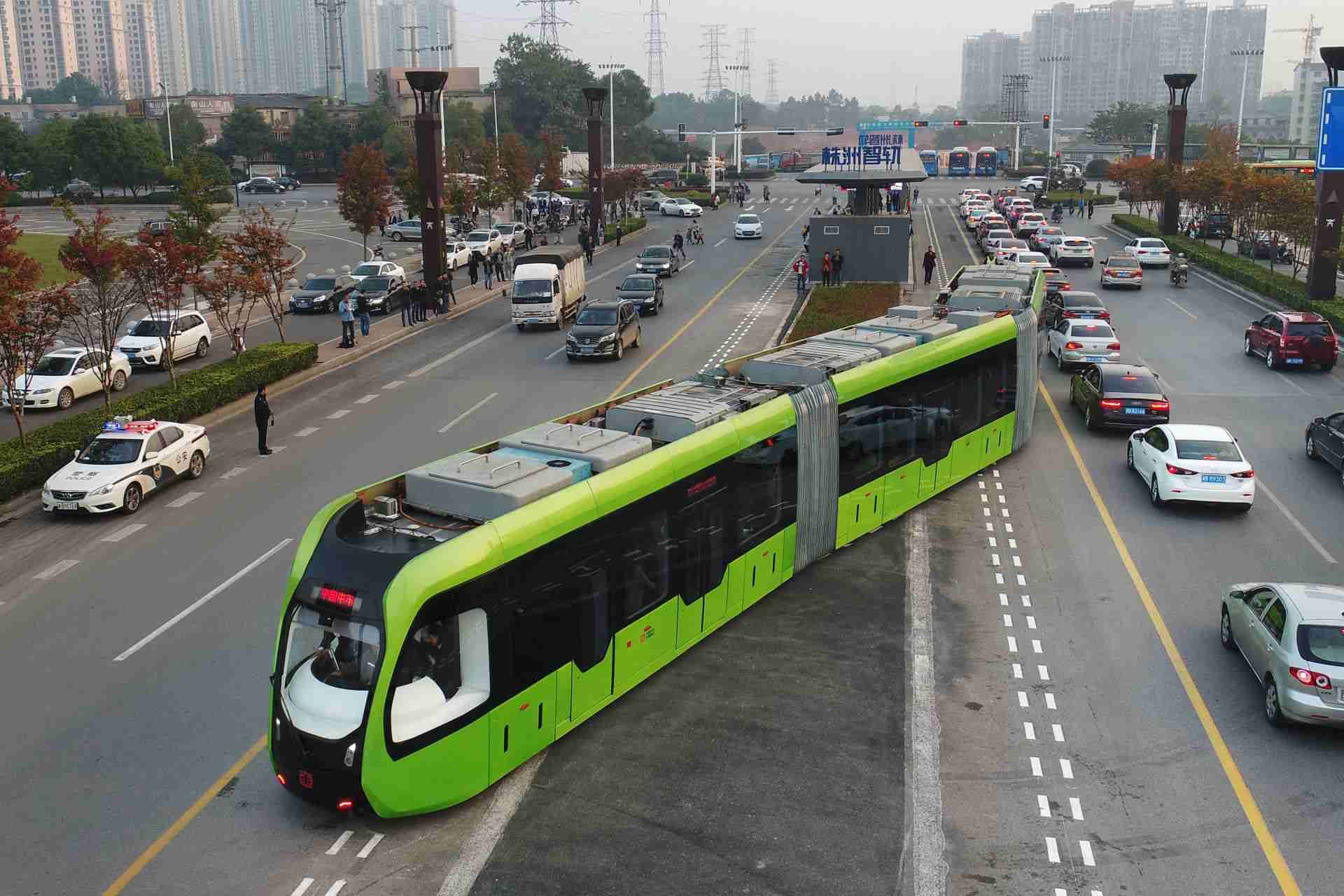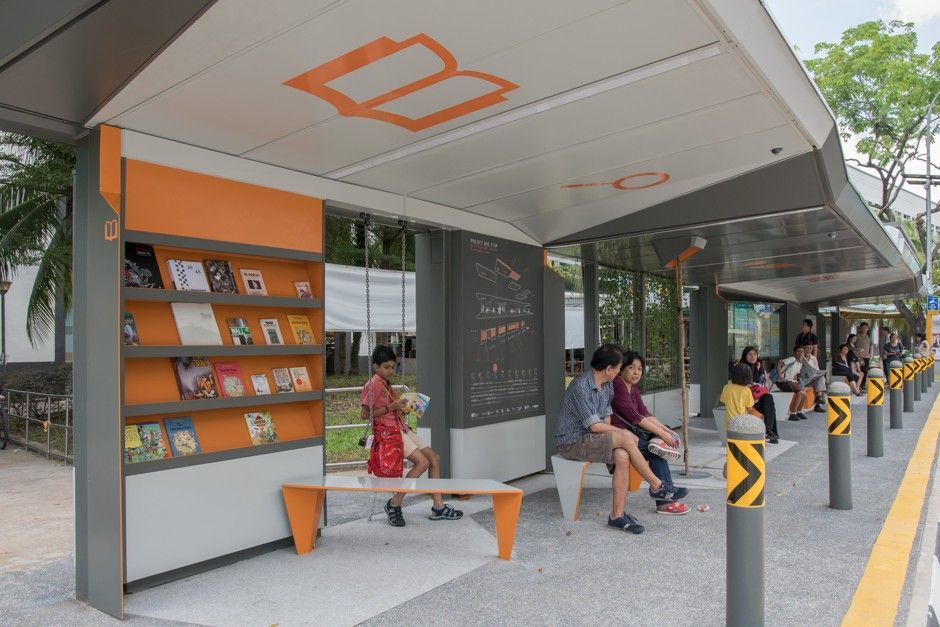
Public transport is an essential ingredient of urban mobility planning and making public transport attractive, affordable and accessible is a key objective of most plans. Urban mobility policies provide a framework for improving public transport including introducing electric buses to reduce pollution and GHG emissions. Action plans provide the measures to introduce and develop mass transit, enable frequent, fast, and reliable services through priority measures like bus lanes, queue jumps, and signal priority. Improving the location, accessibility, comfort and safety of public transport shelters and stops are essential measures to increase ridership.
Public Transport Improvement Measures comprise:
n
Buses
Buses are the most commonly forms of public transport. An average bus carries between 30 and 100 passengers, some buses have a capacity of up to 300 passengers. The most common type is the single-deck bus, with double-decker and articulated buses carrying larger loads, and minibuses carrying smaller loads. The most common power source is the diesel engine. Currently, alternative fuel sources are being explored to reduce pollution and GHG emissions. These include hybrid electric buses, fuel cell buses, electric buses, and ones powered by compressed natural gas or biodiesel. In the past, nearly all buses were "high-floor" with a bus deck design that requires climbing one or more steps (now known as step entrance) to access the interior floor that is placed at a higher height. Increasingly, buses are becoming "low-floor" and have no steps between the ground and the floor of the bus at one or more entrances, and low floor for part or all of the passenger cabin. These buses are accessible from the sidewalk with only a single step with a small height difference, caused solely by the difference between the bus deck and sidewalk. This improves the accessibility of the bus for the public, particularly the elderly and people with disabilities, including those using wheelchairs and walkers. Almost all are rear-engine, rear-wheel-drive layout with no drive shaft.
Single Deck Buses
The single deck bus is the standard mode of public transport bus travel, increasingly with low floor features. Full-sized single-deck buses can carry between 60 and 120 passengers including those standing. These buses, carrying up to 80 passengers each, can carry up to about 15,000 passengers per hour.
Double Deck Buses
A double-deck bus (or double-decker) is a bus that has two storeys or decks. The best-known example is the red London bus. One of the advantages of double decker buses is that they’re able to transport more passengers (60 to 120) than a single decker without taking up more space on the road. Their small width also makes them easier to navigate in busy areas and on narrow roads. Double-decker buses are also popular with passengers because of the better view. However, they offer less room for disabled passengers, luggage and pushchairs than articulated buses, the stairs to the upper level can pose a safety hazard and make them less accessible to individuals with handicaps. They take longer to board and are restricted on routes because of their height.
Minibuses
Articulated Buses
An articulated bus is usually a single-decker and comprises two or more rigid sections linked by a pivoting joint (articulation) enclosed by protective bellows inside and outside and a cover plate on the floor. This allows a la higher passenger capacity (94–120 passengers) while still allowing the bus to maneuver adequately. Due to their high passenger capacity, articulated buses are often used as part of bus rapid transit schemes. They are typically 18 m (59 ft) long. Bi-articulated buses (which have two trailer sections rather than one) have a capacity of around 200 people, and a length of about 25 m (82 ft). They are used almost exclusively on high-capacity, high-frequency services on bus rapid transit services (where they are sometimes equipped with high floor entrances that meet the requirements of the high floor BRT stations).
Electric Buses
Electric buses could pioneer a new age of clean and efficient urban transport and put cities on track toward sustainability. Despite their huge promise, their adoption has been uneven and, limited in scale. Proponents of electric buses claim they will reduce greenhouse gas emissions. However, this will depend on how electricity is generated and will only be achieved with electric grids are powered by renewable sources. Nevertheless, shifting to electric buses would have a positive impact on reducing local pollution in cities. Two reports recently published by the World Resources Institute identify the Barriers to Adopting Electric Buses and offer practical solutions on How to Enable Electric Bus Adoption in Cities Worldwide.
n
Priority Measures
In order to keep and attract riders, public transport must be frequent, fast, and reliable. This requires prioritizing street level transit above automobile traffic, through priority measures like bus lanes, queue jumps, and signal priority.
Strategies and Action Plans
Strategies and Action Plans should focus on improving customer experience, connecting the urban area through better public transport services, and fostering collaboration between transit operators and roadway agencies. They should be based on extensive consultation with citizens and passengers. Strategies provide a vision for the future of public transport and Action Plan provide a roadmap for carrying out the recommendations. They should include policies, programs and services that remove barriers for women, the elderly, children, low-income households, persons with disabilities and other under-resourced communities. They should be designed to improve the overall travel time and reliability for public transport customers, particularly on the Rapid Transit Networks. The most important objective of public transport improvement strategies and action plans is to improve accessibility to efficient, comfortable and affordable public transport for residents. This requires the analysis of current accessibility levels throughout the urban mobility planning area and for all current and potential public transport customers.
Reserved Lanes and Transitways
Reserved transit lanes delineate space within the roadway as exclusive, either full- or part-time, and can generate transit benefits with relatively low implementation costs. Transitways physically separate a portion of the street for transit’s exclusive use, providing high-quality running ways at all times. They are optimal for high-occupancy, continuous corridors. Reserved Lanes and Transitways can boost public transport reliability, travel speed, capacity, and increase the total performance of the network.
Traffic Signal Priority
Transit Signal Priority (TSP) adjusts the timing of a traffic signal’s red and green cycles to reduce the amount of time a transit vehicle spends waiting at a red light. TSP works by making minor modifications to the traffic signal cycle (or phasing). It can either extend green times so an approaching transit vehicle can get through the intersection without stopping or shorten red times so a stopped vehicle can get moving again. TSP helps provide faster and more reliable transit service and is appropriate for any street-running transit vehicles, including buses and light rail vehicles, especially on corridors with dedicated transit lanes.
n
Rapid Transit
Rapid transit systems allow people to travel quickly between different neighborhoods within a comprehensive urban mobility and spatial planning framework that includes walking and cycling as well as Transit Oriented and Corridor Development strategies. Rapid transit systems usually operate on specific fixed tracks or segregated rights of way, according to established schedules along designated routes or lines with specific stops (although Bus Rapid Transit and Trams sometimes operate in mixed traffic). Mass transit can achieve reduced travel times through the provision of widely accessible networks, higher speed vehicles, exclusive and grade separated right of-way infrastructure, special limited-stop or express services, efficient fare collection systems, and/or faster boarding and alighting techniques. Higher carrying capacities may be achieved through larger vehicles, articulated vehicles, multiple sets of vehicles (i.e., a bus platoon or a train), and/or more frequent service. Examples include Autonomous Rapid Transit (ART), Bus Rapid Transit (BRT), Light Rail Transit (LRT) and Mass Rapid Transit (MRT) systems.
Autonomous Rapid Transit (ART)
Autonomous Rapid Transit (ART) is a LiDAR (Light Detection and Ranging) guided articulated bus system. It is a new approach that uses self-driving, electric articulated vehicle guided by a double-dashed line painted on the street. It can be deployed as a high-capacity, low-carbon mass transit system and has been described as a combination between a bus and a tram (often called a "trackless tram"). Although the system is labelled as "autonomous" (and the models in operation are optically guided) they do have a driver on board. ART systems are in use in cities in China (Chengdu and Zhuzhou) and Europe (Rouen and Castellón de la Plana) and systems are being planned in Malaysia and Qatar and are being considered in Australia.
Bus Rapid Transit (BRT)
Bus Rapid Transit (BRT) systems are cost-effective, bus-based rapid transit systems, which can achieve high capacity, speed and service quality. They accomplish this through a combination of features: segregated bus lanes, off-board fare collection, level boarding, bus priority at intersections, large (often articulated) buses and well-designed and accessible stations. They provide mass transport services at lower costs and shorter implementation times than rail reaching high levels of capacity, comfort and safety. They can provide multi-corridor services that adapt to demand quite effectively. BRT systems can handle between 15,000 to 25,000 passengers per hour per direction and some systems (in Bogotá and Istanbul) have achieved 49,000 to 45,000 passengers per hour per direction.
Light Rail Transit (LRT)
Light Rail Transit (LRT) systems use electrically powered rail vehicles along exclusive rights-of-way at ground level, on raised structures, in tunnels, and in streets. LRT systems operate on fixed rails usually with power being drawn from an overhead electric line (although in some cities such as Bordeaux, the power is from an insulated third rail). They can often be run through existing city streets and parks, or placed in the medians of roads. Operating on two-minute headways using traffic signal priority, a system can handle up to 30 trains per hour, achieving peak rates of over 20,000 passengers per hour in each direction.
Mass Rapid Transit (MRT)
Mass Rapid transit (MRT) systems are designed to transport large numbers of people often short distances at high frequency. They use electrically powered rail vehicles along exclusive rights-of-way that primarily run below the surface and may be called a metro, subway, tube, or underground. MRT systems usually operate six-car to twelve-car trains on fixed rails with power being drawn from a third electric rail (some systems also use a separate fourth rail) or overhead electric lines. Cars have a capacity of 100 to 270 passengers. Typically there are 1,200 people per train, giving 36,000-75,000 people per hour. The highest attained capacity is 80,000 people per hour by the MTR Corporation in Hong Kong.
n
Shelters, Stations and Transit Hubs
For a typical transit trip, 10-30% of travel time is spent waiting, and passengers tend to be particularly sensitive to the conditions where they wait. It is therefore essential to design appropriate shelters and stations that
are comfortable, clean, attractive and safe, with services such as seats, public telephones, washrooms and vendors. They should be provided with shade and air conditioning during hot conditions and heating during cold conditions as well as convenient user information, including transit route, schedule and fare information. Bus shelters should be separated sufficiently from roadways to minimize passenger exposure to traffic risk, noise, dust and splashes and they should be provided with excellent pedestrian access, including convenient and safe crossing of busy roads, and pedestrian shortcuts where appropriate. Shelters and stations should reflect Universal Design and should address security concerns by providing visibility and emergency response, and by locating other services and activities within or adjacent to stations, such as vendors and stores, offices and police stations. Shelters usually serve one transit line; stations usually serve one or more transit lines with limited transfers; and transit hubs serve several transit lines with multiple transfers.
Shelters
The provision of shelters should be prioritized with the goal of improving comfort for most passengers with comfortable seating and vital information. Shelters should be accessible, safe, vandal-resistant and allow visibility. Exit and entry openings should be oriented so that people are protected from the weather. Lights should be housed in a protective casing to reduce vandalism and illuminate the waiting and boarding areas. In Singapore, a new shelter features ample seating, a rack of books, bicycle parking, a swing, artwork and a rooftop garden, complete with a small tree.
The space is also hyperconnected to enable users to scan a QR code to download e-books, charge their phones, and peruse arrival times and a journey planner to find the fastest route. Screens also broadcast information on weather, news, and local events. Solar panels help offset electricity use.
Stations
Public transit stations serve more than one transit line and should therefore accommodate transfers between services. They should meet all the design requirements of shelters and ensure seamless transfers between services. They should be designed for intermodal connectivity and should accommodate the range of transit vehicles in use to ease boarding.
Transit Hubs
Transit hubs are central nodes for inter- and inner-city mobility and places of interchange between modes that require seamless connectivity. They also provide complementary amenities and services (shops, markets, health facilities, cultural facilities, etc.) and they serve as mixed-use hubs for people to move, work, shop and meet.

















